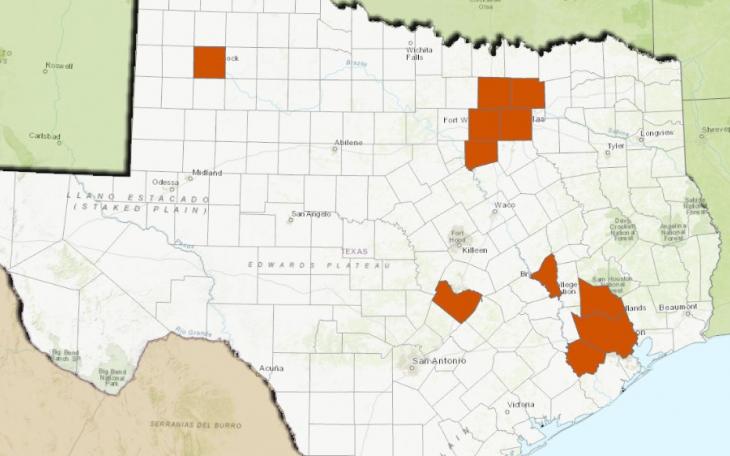In Tom Green County, the Texas Department of Family and Protective Services reported 583 confirmed cases of child abuse or neglect in 2014. According to the West Texas Violence Index created by Angelo State University’s Community Development Initiatives in March 2014, “This number translates to a local rate of child abuse that is more than double the level for the state of Texas as a whole.”
In fact, child abuse and neglect is one of six indicators the West Texas Violence Index included as a violent event that can devastate a community. Also, the Index noted that, in 2013, Tom Green County had a higher rate of child abuse than the state overall.
San Angelo Attorney Carmen Dusek, who Governor Rick Perry appointed to the state’s Protect Our Kids Commission in July of 2014, said, on average, there are 220 child deaths due to abuse and neglect every year in the state. The cost to taxpayers is $1 million per each child.
That price tag and the increase of child abuse and neglect cases is the reason for the Protect Our Kids Commission development. This past week, after meeting, analyzing, discussing, and developing a plan, the 14-person Commission consisting of Dusek and other lawyers, child welfare agencies, medical professionals and other child abuse advocates, rolled out a 49-page Protect Our Kids Commission Report at the Texas Capitol in Austin.
This report not only provides details about this issue plaguing Texas, but it also offers fiscally responsible recommendations to combat the problem.
Statistics and Indicators of Child Abuse and Neglect
In the report, the commissioners noted that neglect fatalities commonly involve drowning, unsafe sleep, care and firearm accidents. Additionally, in 2013, 81 percent of fatalities caused by abuse or neglect involved children three years old or younger, and 58 percent of the victims were male.
Unfortunately, Hispanic children have the largest percentage of deaths due to abuse or neglect; but, African American children die at a per capita rate that is “disproportionately higher compared to their overall representation in the Texas population.”
Also, physical abuse fatalities most commonly involve blunt force trauma inflicted by a father or a boyfriend, and parents or other family caregivers are the most common perpetrators in fatal child abuse or neglect investigations.
As part of the report, there is a map in Appendix B that shows six different factors that lead to neglect and abuse. These include teen pregnancy, drug use, mental health services in a county, deaths in a county and the issue of poverty and abuse levels. In the last regard, poverty is a leading risk indicator.
“Poverty rates are definitely an indicator because [parents] are often overwhelmed with the responsibilities of dealing with the families’ needs,” Dusek explained.
Also, an expert who came in and spoke to the Commission said officials will always see spikes in child abuse rates when mortgage foreclosures rise.
Dusek said, “They go hand in hand, and it’s that internal stress within the family due to the financial strain that emotions often get out of control and people don’t know how to handle it; so, we end up with abuse situations.”
Of course, with the economic crisis, child abuse and neglect spiked across the country, especially in 2010. This is always common whenever there’s such a crisis, Dusek noted.
“You might get a bump during that time period of additional cases of abuse and neglect,” she said.
Another problem Dusek mentioned is that a lot of people today focus on children who go through Child Protective Services when dealing with this problem.
“From looking at the number of child deaths from abuse and neglect over the last decade, only slightly more than half were on Child Protective Service's radar,” said Dusek. “The prevention effort needs to be much broader in the state of Texas than just Child Protective Service investigators getting involved.”
Unsurprisingly, in that equation of cases are young parents.
“Issues, such as teen pregnancy, raise the risk level for a family,” the lawyer stated.
Problems Facing West Texas
Dusek explained that the problems faced in West Texas are in many ways similar, but in many ways different than the rest of the state of Texas.
“One of the issues that came up several times was mental health services,” Dusek pointed out.
One thing Commissioner John J. Specia, Jr. J.D. with the Texas Department of Family and Protective Services spoke about is the service gaps in the state, particularly out in West Texas where there are not as many health providers as the counties would like to have and need, stated Dusek.
“We don’t have the level of substance abuse treatment we would like to have,” she continued. “ADAAC is working hard to build a treatment center, but still you have these rural communities that don’t have any service available.”
Therefore, Dusek said there is no overlapping of medical and mental health providers, nor are there substance abuse providers and centers to help catch at-risk individuals in time.
“We have holes between the services available out here, and so we do see differences in the nature of abuse, the causes of abuse and what those leading indicators are in rural Texas as opposed to urban areas,” Dusek noted.
Solutions in Battling This Problem
The Protect Our Kids Commission has recommended that the state of Texas invest in prevention efforts from evidence based strategies.
“Evidence based programs are not just a concept, but programs that have demonstrated real success whether it’s here in Texas or around the country,” Dusek said.
As a part of the Commission’s report, there is a lengthy spreadsheet that lists these evidence-based programs for state officials to consider.
“What we want to see is the state of Texas invest money, but we want it to invest wisely to where we don’t waste money in the prevention area,” Dusek explained.
The Commission has even provided a cost breakdown per family to show what it would take to provide those prevention services.
“It is astonishing when you look at the numbers to what it costs the State of Texas for every child death,” Dusek said. “When you have a child die due to abuse and neglect, at the time you have law enforcement reviewing the case. You sometimes, unfortunately, have a prosecution case because it’s an intentional act. When you have Child Protective Services involved, there’s typically another child in the home, and soon after, there’s another child in the home. It costs us $1 million dollars per child death case for the aftermath of a child’s death.”
Dusek did say, however, that San Angelo is blessed because it has a home-based and evidence- based program that has showed success in reducing neglect and abuse, and that’s Healthy Families San Angelo.
“Any time you can have that one-on-one prevention services, you have a much higher rate of achieving success,” the lawyer asserted. “We’re not saying that global level prevention services should stop, such as public service announcements on drowning, car seat safety and shaken baby. Those global messages still need to be out there.”
However, Dusek explained that when there is one-on-one contact from the home-based service, there is what’s commonly known as “a bleeding effect.” This occurs when one mother is served, but the information she gains spreads to her sisters, friends, neighbors, and her own mother; it’s multi-generational.
“So serving that one mother can have a much greater effect and impact than the dollar amount spent,” Dusek affirmed.
Overall, Dusek said she hopes state leadership will take this report and move forward. These individuals will find some aspects of the recommendation have a fiscal note to them, but there are ways the Commission believes it will help reduce fiscal responsibilities in other areas.
There are also simple recommendations that have hardly any fiscal responsibility to them.
“The bigger problem is they’ll have to invest state taxes,” Dusek stated. “We tried to be as fiscally responsible as we could in what we believed really could make a difference without destroying the budget of Texas.”
Why Advocacy in West Texas is Important
Dusek, who is the only commissioner west of I-35 in the state, said she got involved in helping children 10 years ago when she faced a personal health situation. When she overcame that and started moving fully in the direction of her career, she had a lot of time to pray, think and study.
“I realized that I had a burning desire to work some in an area where I could make a difference with my gifts and my skills as a trial lawyer, and there was a need at the time for children to be represented in our district courts,” she said. “Our numbers were significantly on the rise, in large part to the methamphetamine problem at that time.”
Dusek also said representing children is some of the most rewarding work she has done. Although she doesn’t do it full-time, she does what she can.
“Being the voice for a child in court, whether it’s in a CPS case or it’s in a family law case where a judge appoints me to help and provide input on a custody situation, shows [children] someone cares about their future and is really looking after their interests.”
Dusek said people in Tom Green County and in West Texas can also help in fighting this problem. All they have to do is be proactive in keeping their eyes and ears open.
“Anyone who believes a child is at risk should make that report to CPS,” Dusek said. “It is always better to err on the side of making a report than to ignore your gut instinct that there’s a problem; because ultimately, that’s how sometimes families get on the radar and help is extended.”
Subscribe to the LIVE! Daily
Required






Comments
Listed By: Yosemite Sam
Poverty and substance abuse. An obvious combination.
- Log in or register to post comments
PermalinkPost a comment to this article here: